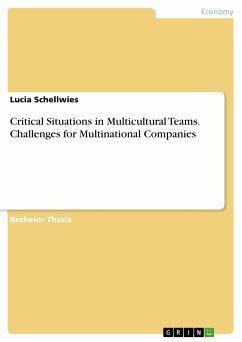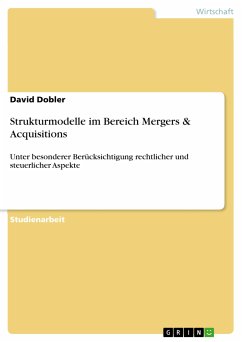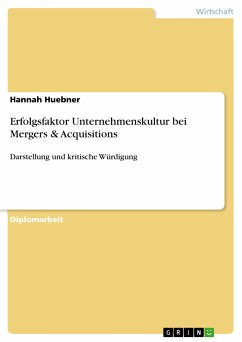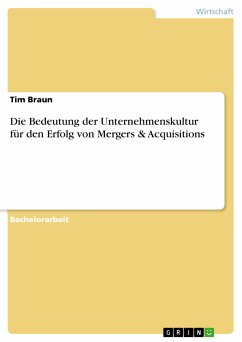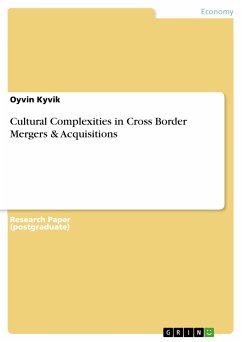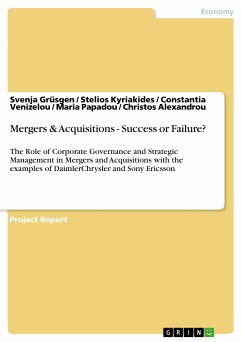Bachelorarbeit aus dem Jahr 2006 im Fachbereich BWL - Unternehmensführung, Management, Organisation, Note: 1,7, FOM Essen, Hochschule für Oekonomie & Management gemeinnützige GmbH, Hochschulleitung Essen früher Fachhochschule, Sprache: Deutsch, Abstract: This bachelor thesis gives information on how to succeed with teamwork in a cross-border and multicultural context, which is of major importance in the case of international mergers and acquisitions (M&As). A company’s management and people in charge of international teams not only face cultural diversity and the implications that come with it, but also the question of how to get teams to be most effective. What kind of leadership is most appropriate for teams and what factors influence teams in their efficiency are two of the most important questions to be answered. For that reason the present thesis concentrates on some of the major theories on M&As, culture, leadership, and team effectiveness and applies them to a practical example: European Aeronautic Defence and Space Company N.V. (EADS), a company that emerged from three culturally different companies in 2000 and that faced and still faces the challenges mentioned above. People from France, Germany, and Spain now need to work together to accomplish common goals, often by means of teamwork. The reader gets to know how EADS perceives and handles cultural diversity, exercises leadership, and achieves team effectiveness. The theory elements selected before serve as a guideline to see how EADS’ actions affected the challenges they faced. These findings from secondary sources together with in-depth interviews with a senior executive at EADS and other experts on multicultural teamwork provide the basis for recommendations on how to cope with cultural diversity after a merger or acquisition. These especially focus on what should be considered in this respect to make the transaction succeed after all. Critical comments and an outlook are added by the author at the end of this research paper.



